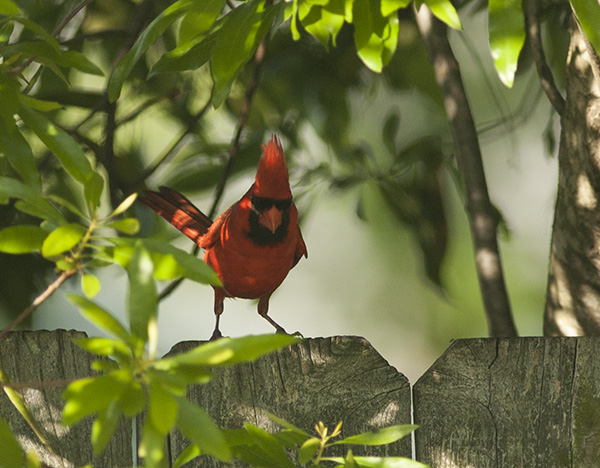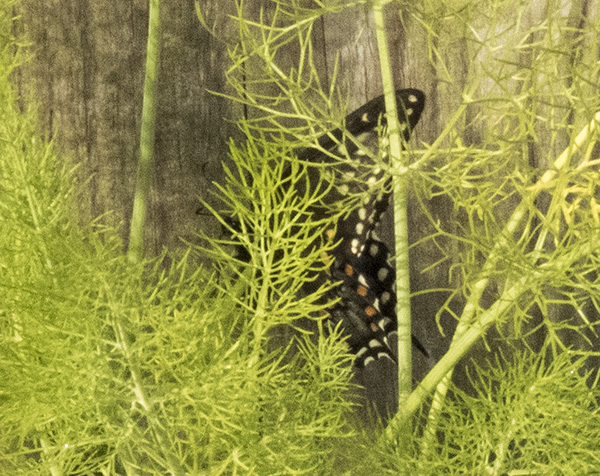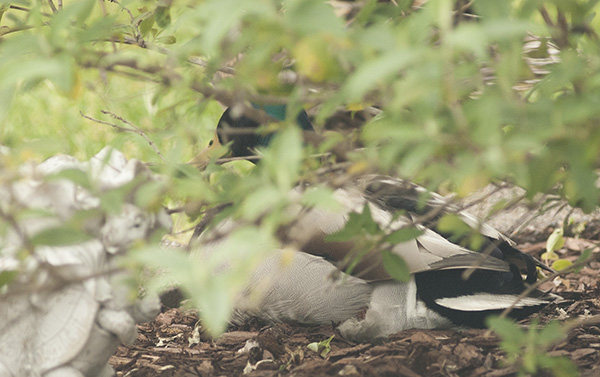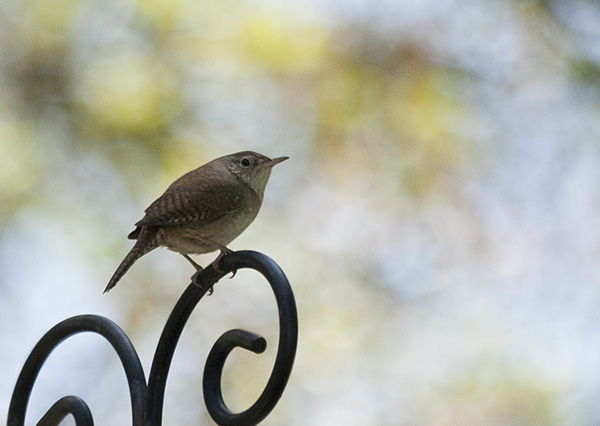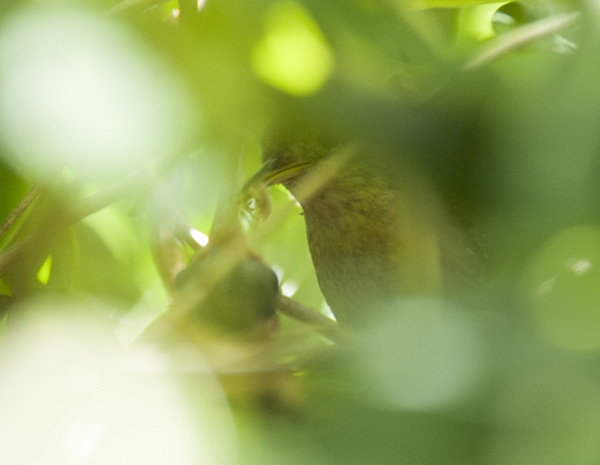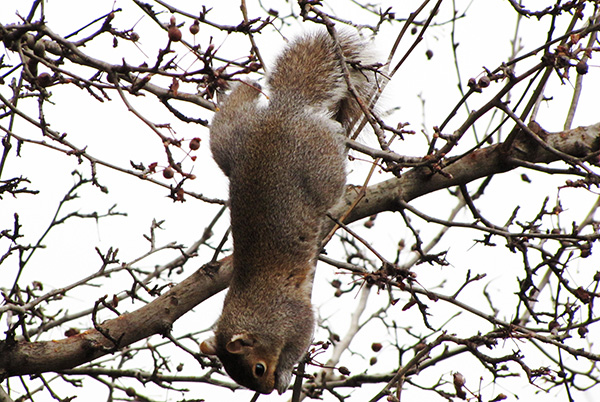In June of 2015, I noticed that one of the yard’s House Wrens had begun feeding a family of Northern Cardinal nestlings. (Read my initial blog post here.)

The adult cardinals, especially the male, were also feeding the nestlings.

In that early blog post I wrote, “I wonder if this kind of behavior is common. Have the yard’s birds been feeding each other all along?”

In searching for answers to my question, I ran across the Tough Little Birds blog, run by biologist Katie LaBarbera. I contacted her through the blog, and she replied that the behavior was unusual enough to be of interest to other biologists. Before too long we had a short article ready to submit for publication. After peer review and a few revisions, the article was accepted by The Wilson Journal of Ornithology and can be found in the current (September 2016) issue: House Wren (Troglodytes aedon) provisions nestlings of Northern Cardinal (Cardinalis cardinalis).
And now, as Paul Harvey might have said, it’s time to post the rest of the story…

Back in June of 2015, while I was searching for answers online, the wrens’ brood hatched. For a few days the male wren stayed busy feeding both nests, dividing his time somewhat unequally in favor of the young cardinals. But something changed as the cardinals neared fledging. The last time I saw the cardinal nestlings accept food from the wren was on June 5th, and the last time I saw him approach their nest was on June 6th. (They greeted his visits on the 6th with silence.) On June 7th, the young cardinals left their nest.

The yard stayed in a turmoil on the 7th, loud with the cries of hungry cardinal fledglings and nervous cardinal parents. (The male cardinal was particularly aggressive with larger birds that day, much to the dismay of a hungry brown thrasher.)


The wren, formerly so devoted to the cardinal nestlings, never approached the cardinals after they fledged. Instead he spent the 7th, and the following days, feeding his own nestlings. The young wrens stayed in their nest box until June 16th and 17th, eating spiders and praying mantises and a variety of other insects brought by their parents.


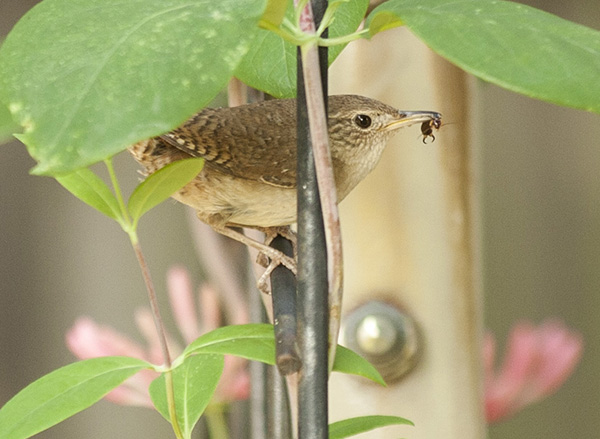


The nestlings grew bigger and bolder each day.


And their parents worked harder and harder to keep them fed.

By June 16th they showed signs of leaving.


And on June 17th …
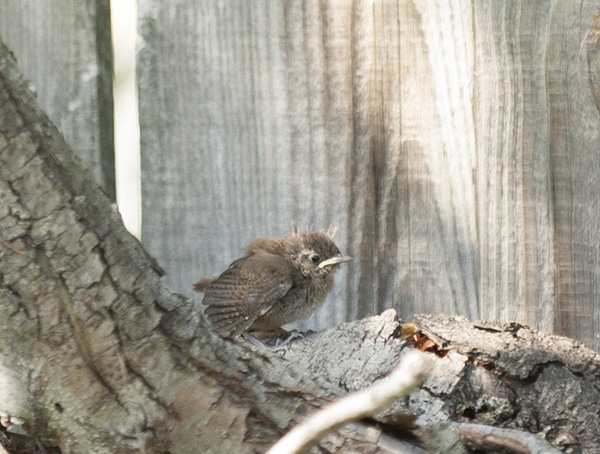
They were out of the nest box, but they were still hungry!



When they left the yard that evening, I felt bereft. As I always do when the yard’s children move on.

I wished, as I always do, to follow the fledglings. Or at least to know their futures. Did any of them survive? Have they, perhaps, visited the yard again in the weeks and months since?

Let me know if you see them.
